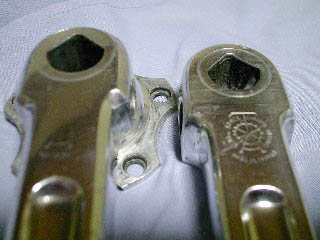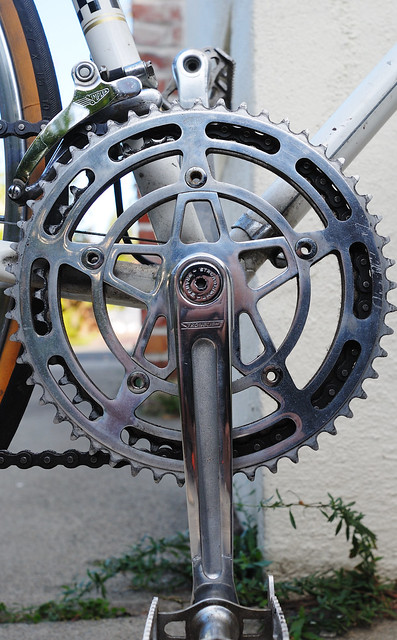Specialites TA is known for making high-quality cranks, chainrings, bottle cages and other bike parts and accessories.
Most people refer to the company simply as "TA," without any notion as to what it signifies.* It never would occur to most people that "TA" is an acronym for "Traction Avant", or front drive.
Specialites TA founder Georges Navet was, like Tullio Campagnolo, a craftsman with an imagination--what we might call a "tinkerer." Navet, a joiner/carpenter, was fascinated by a then-new Citroen innovation: the front-wheel drive automobile. Why can't we have a bicycle like that?, he wondered.
Now, if you want to be technical (pun intended), front wheel drive bicycles were not new: Before the invention of the chain-and-sprocket drive, bicycles were propelled by crams and pedals attached to the front wheel. That is why front wheels of 1880s high-wheel (“penny farthing”) bikes were usually much larger than rear ones. Navet, however, wanted to create a front-wheel drive bike on which the gear didn't depend on the size of the wheel.
Sadly for him, none of his traction avant experiments worked. But in the meantime, derailleurs gained popularity and were finally approved for use in competition. The real potential, he saw, was in cranksets with multiple chainrings--in aluminum alloy, for light weight--in a wide range of sizes. A triple crankset greatly expanded the gear range offered by freewheels of the time (just after WWII), which had three or four sprockets ranging in size from 14 to 24 teeth.
(Now you know why those old derailleurs from Campagnolo, Huret and Simplex could wrap up yards and yards, or meters and meters, of chain even if they couldn't handle more than a 24 or 26 tooth rear sprocket: They were designed to accommodate the gearing available at the time.)
So, in a sense, even though he couldn't realize his vision of a front wheel drive bicycle, Georges Navet achieved another kind of traction avant with his cranksets and chainrings.
*--When I was growing up in Brooklyn, some of the subway cars bore TA logos, for Transit Authority. In the academic world, a “TA” is a teaching assistant: usually, a grad student who does the work senior tenured profs don’t want to do. To this day, I associate TA with trains and schools as well as bikes!

















